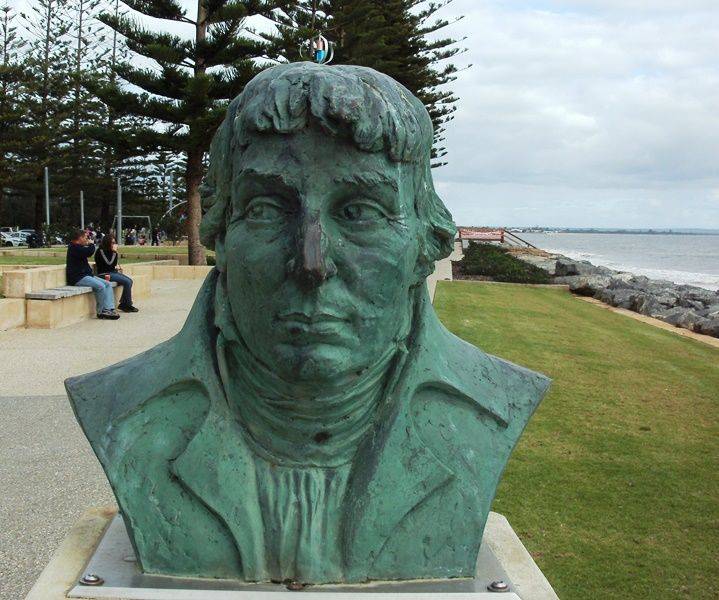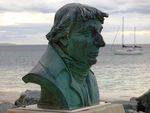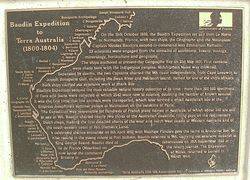
Baudin ExpeditionPrint Page 
The bust of Nicholas Baudin commemorates the bicentennial of the Baudin Expedition. It overlooks Geographe Bay, Baudin’s first anchorage, which was named for his ship, the Géographe. The bust was donated by the Terra Australis Committee as part of a project which charted the voyage of Nicholas Baudin along points of his famous journey. Mauritius, Tasmania and now Busselton are just some of the locations which feature the distinctive artworks.
The expedition reached Australia in May 1801. In April 1802 they encountered the British ship Investigator captained by Matthew Flinders, also engaged in charting the coastline, in Encounter Bay in what is now South Australia. The expedition later stopped at the British colony of Sydney for supplies, where Baudin bought a new ship Casuarina . From there he sent Naturaliste back to France, carrying all the specimens that the expedition had collected to that point. From Sydney, the remaining ships headed to Tasmania, before continuing north to Timor. On their way home the ships stopped in Mauritius, where Baudin died of tuberculosis.
Location
| Address: | Queen Street, Busselton Jetty Interpretive Centre, Busselton, 6280 |
|---|---|
| State: | WA |
| Area: | AUS |
| GPS Coordinates: | Lat: -33.644915 Long: 115.342886 Note: GPS Coordinates are approximate. |
Details
| Monument Type: | Sculpture |
|---|---|
| Monument Theme: | Landscape |
| Sub-Theme: | Exploration |
Dedication
| Actual Monument Dedication Date: | Friday 22nd October, 2004 |
|---|
Government Of France
Baudin Expedition
to
Terra Australis (1800 - 1804)
On the 19th October 1800, the Baudin Expedition set sail from Le Havre in Normandy, France with two ships, the Géographe and the Naturaliste. Captain Nicolas Baudin`s second-in-command was Emmanuel Hamelin. 25 scientists were engaged from the domains of astronomy, botany, zoology, mineralogy, horticulture and geography.
The ships anchored at present day Geographe Bay on 31st May 1801. First contacts were made here with the Indigenous peoples. Midshipman Vasse was drowned. Separated by storms the two Captains charted the WA coast independently, from Cape Leeuwin to Joseph Bonaparte Gulf, including the Swan River and Heirisson Island, named for one of the ship`s officers. Both ships carried out extensive work at Shark Bay.
Baudin`s Expedition secured the most valuable natural history collection of its time - more than 200,000 specimens of flora and fauna were collected of which 2542 were new to science, doubling the number of known species. It was the first time that live animals were transported which later formed a small Australian zoo at the Empress Josephin`s summer palace at Malmaison on the outskirts of Paris.
The Expedition was responsible for hundreds of French place names in Australia, of which about 240 are still in use in WA. Baudin charted nearly two thirds of the Australian coastline, filling gaps on the rudimentary Dutch maps, making the first detailed charts of the west and north west coasts of Western Australia and of the south-eastern coast of Van Diemen`s Land.
A celebrated chance encounter on the 8th April 1802 with Matthew Flinders gave the named to Encounter Bay, SA. After resting in the young colony at Port Jackson, Baudin returned to WA, carrying out extensive research at King George Sound. Baudin died of tuberculosis on 16th September 1803 at Ile de France (Mauritius) on the return journey. The Expedition now under the command of Milius returned to Lorient in Brittanny in March 1804.
Terra Australis 2001 WA Association Inc
Centenary of Federation Western Australia










